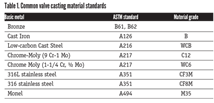Early Project Team Communications Leads to a More Successful Outcome
It is becoming increasingly difficult for process manufacturers and producers to execute large capital projects.
In the mid-1980s, when I was a newly-minted engineer working on systems projects for offshore oil & gas production platforms, project communications were pretty simple. I was assigned which platforms I would work on, and from there I developed the plans for the control, safety, power and communications systems, working up requirements for suppliers to bid. After selecting the suppliers based on their bid responses, I worked with the construction team, production engineers and platform operators to locate, install and start up these systems.
Unfortunately, many communications occurred at the back end of the project where many assumptions were made that didn’t align as we got into the construction and commissioning phases. Resolving these assumptions late in the project was costly and delayed schedules. It’s hard to imagine even attempting this approach now as the complexity of offshore platforms has increased over the decades.
Around this same time, the Construction Industry Institute (CII) was founded with a mission to improve safety and capital efficiency in these capital projects, including the process industries. CII combines manufacturers, suppliers and academic institutions to perform research, develop best practices and provide training for project personnel. I reviewed research specific to project team communications and will highlight a few key takeaways in this article.
The ability to influence project costs decreases as a project progresses through the phases of conceptual planning, design, procurement, construction and startup. At the same time, the project costs increase. Also, different project team members have different levels of influence at each of the phases. For example, engineering has greater influence earlier in the process while the construction team has great influence later in a project. These changing levels of influence affect the communication flows among project team members.
Team Communication
According to a whitepaper released by The Project Management Institute, among organizations considered highly effective communicators, 80% of projects meet original goals, versus only 52% at their minimally effective counterparts. Also, highly effective communicators are also more likely to deliver projects on time (71% vs. 37%) and within budget (76% vs 48%).
While good communication keeps teams motivated, true communication can be a rare commodity because, while oftentimes there is not enough or the right kind of communication, it can also be that there is too much unnecessary detail which bogs down a project.
The CII research identified six critical areas to assess the effectiveness of project team communications: accuracy, timeliness, completeness, understanding, barriers and procedures.
- Accuracy: The accuracy of information received as indicated by the frequency of conflicting instructions, poor communication, and a lack of coordination
- Timeliness: The timeliness of information received, including design and schedule changes
- Completeness: The amount of relevant information received
- Understanding: An understanding of information expectations with supervisors and other groups
- Barriers: The presence of interpersonal, accessibility-related, logistical, or other types of barriers that interfere with communications with supervisors or other groups
- Procedures: The existence, use, and effectiveness of formally defined procedures outlining scope, methods, or other project concerns
Based on these categories, a diagnostic questionnaire tool was developed to score questions in each of these communications categories on a zero to ten scale. Weighting factors were applied to the questions based on their correlation to a database of projects and their measures of success. Based on the number of questions and weighting factors, a project communications effectiveness score between 0 and 100 is determined.
Lessons Learned
Here are some lessons from this research and tools that can apply to end users, contractors and suppliers on capital projects.
First, it is important to perform an assessment early in a project’s lifecycle targeting project management, engineering and construction teams. This effort provides an early benchmark to compare against as the project progresses through the phases.
Second, this also helps the project management team appraise everyone’s understanding of and alignment on the project objectives, procedures, roles and responsibilities. Beyond helping align the project teams, this assessment can help identify communication channels, barriers, filters and informational deficiencies.
Instrumentation and automation technologies can also play a major role in successful project communications. Communications technologies and cloud-based engineering environments can help to foster better communications among the end user, contractor and suppliers.
By rethinking engineering practices and design, project costs and schedule delays can be reduced. Technologies can also help to reduce complexity by having a more human-centered design to focus on the key tasks to be performed by the end user.
Finally, project changes are inevitable. By having technologies better accommodate late project changes by minimizing or eliminating rework, budgets and schedules can be maintained.
Whether a project team uses formalized project communication assessment tools from organizations such as the CII or tools developed internally based on past project practices and learnings, early alignment is a critical activity along with periodic checkpoints to determine if this alignment is increasing or decreasing.
The more that the manufacturer, contractor and key suppliers are involved in this early planning and project team alignment, the more that the probability of effective project communications and overall project success will be achieved.
The later in a project that this alignment occurs, the more expensive it will be in terms of budget and schedule. It’s far better that the project team members feel communications are too great rather than too little.
Jim Cahill is head of social marketing at Emerson Automation Solutions.
RELATED CONTENT
-
Process Instrumentation in Oil and Gas
Process instrumentation is an integral part of any process industry because it allows real time measurement and control of process variables such as levels, flow, pressure, temperature, pH and humidity.
-
Intermediate Class Valves, the Forgotten Classification
These days, piping designers use automated systems that default to standard classifications such as pressure classes of 150 to 2500 for valves and associated equipment.
-
Beauty or a Beast? Using NDE on Valve Components
When it comes to valves, “beauty is only skin-deep” is often a true statement. Since Superman and his X-ray eyes don’t really exist, there is no way to verify the quality of a valve or valve component just by looking at it.










 Unloading large gate valve.jpg;maxWidth=214)